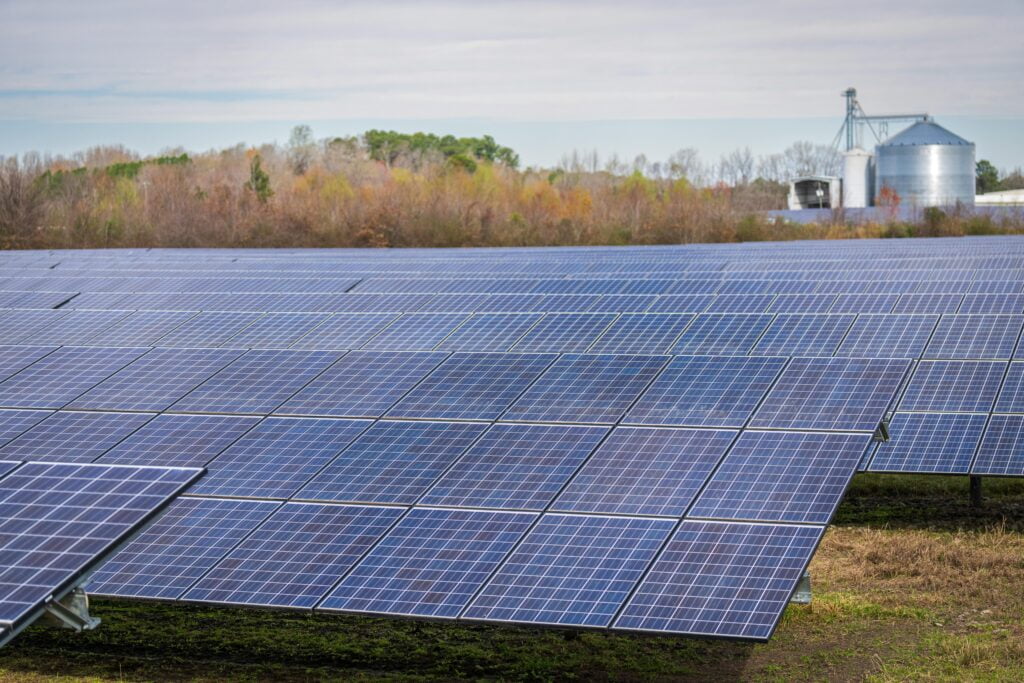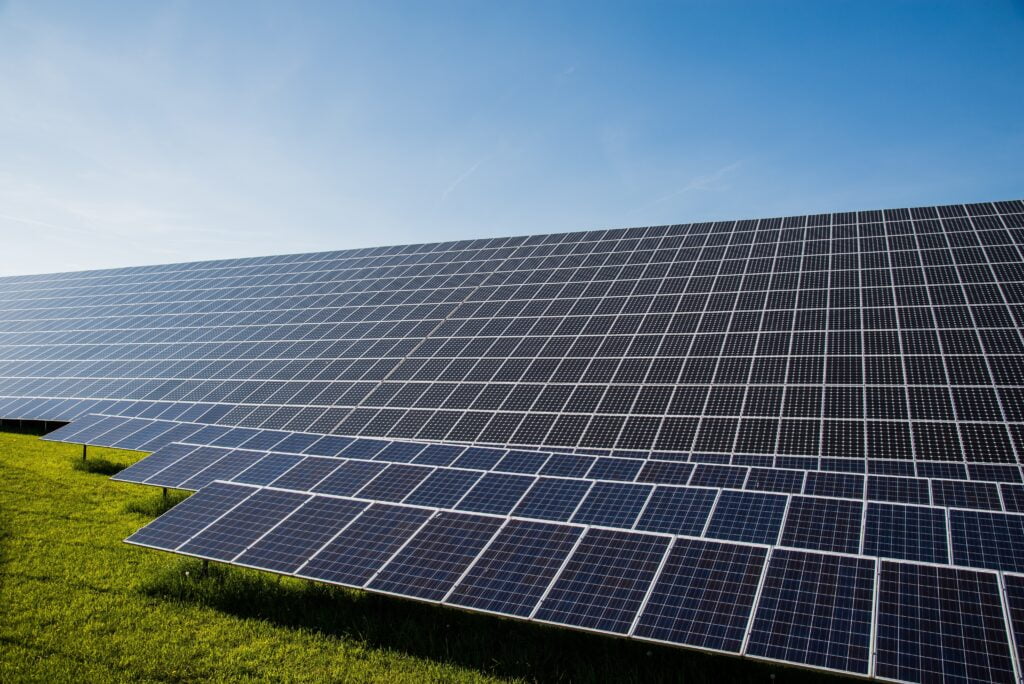Solar panels are an excellent way to harness renewable energy from the sun. They are becoming more popular as people seek sustainable and eco-friendly energy solutions. However, understanding the technical terms associated with solar panels can be challenging.

This article aims to explain what is amps, what are volts, and their significance in solar panels. We will also discuss the importance of a solar production calculator and how to define watts, amps, volts. By the end of this article, you’ll have a clearer understanding of these concepts and their applications in solar energy systems.
Table of Contents
What is an Amp?
Amp (short for ampere) is a unit of electric current. It measures the amount of electric charge flowing past a point in a circuit over a specific period. Understanding what is an amp is crucial when dealing with solar panels, as it helps determine the amount of electrical current generated by the panels.
Role of Amps in Solar Panels
In the context of solar panels, what is amps becomes important because it indicates how much current the solar cells produce. The higher the amps, the more electricity is being generated. This is essential for determining the capacity and efficiency of a solar panel system.
Relation to Other Electrical Terms
Amps are closely related to other electrical terms such as volts and watts. To fully understand what is amps, it’s essential to grasp how they interact with these other units. For instance, the formula Watts = Volts x Amps shows the relationship between power (watts), electric potential (volts), and current (amps).
What are Volts?
Volts are the units of electric potential difference or electric pressure. They measure the force that pushes electric current through a circuit. Understanding what are volts is crucial because it determines how much potential energy is available to move electrons through the system.
Role of Volts in Solar Panels
In solar panels, what are volts is important as it affects the efficiency and output of the system. Higher voltage means more potential energy to drive the current through the circuit, resulting in more power generation.
Relation to Other Electrical Terms
Volts are directly related to amps and watts. To fully understand what are volts, it’s important to see how they fit into the larger picture of electrical measurements. The formula Watts = Volts x Amps again highlights this relationship.

Define Watts, Amps, and Volts
To fully grasp the concepts of electrical measurements, it’s essential to define watts, amps, volts together:
Watts:
Units of power that measure the rate of energy transfer.
Amps:
Units of electric current that measure the flow of electric charge.
Volts:
Units of electric potential difference that measure the force driving the current.
By understanding how to define watts, amps, volts, you can better comprehend the performance and capacity of a solar panel system.
Importance in Solar Energy Systems
Knowing how to define watts, amps, volts is crucial for designing and optimizing solar energy systems. These measurements help determine the size and number of solar panels needed to meet energy demands.
Solar Production Calculator
A solar production calculator is a tool used to estimate the amount of electricity a solar panel system can produce. It takes into account factors such as the size of the solar panel, the amount of sunlight received, and the efficiency of the panels.
How It Works
A solar production calculator uses inputs like location, panel size, and efficiency to estimate the energy output of a solar system. This helps in planning and optimizing solar installations, ensuring you get the most out of your investment.
Importance in Planning Solar Panel Installations
Using a solar production calculator is essential for accurately planning solar panel installations. It helps determine the number of panels needed, the expected energy output, and the potential savings on electricity bills.
Examples of Usage
For instance, if you live in a sunny region and plan to install solar panels, a solar production calculator can help you estimate the annual energy production. This information is vital for deciding the size and number of panels to install.

Practical Applications
Understanding what is an amp and what are volts has practical applications in designing and optimizing solar panel systems. By using a solar production calculator, you can accurately estimate the energy output and plan your system accordingly.
Calculating Power Requirements
To calculate power requirements, you need to know the power consumption of your appliances and the energy output of your solar panels. Using the formula Watts = Volts x Amps, you can determine the necessary specifications for your solar system.
Using a Solar Production Calculator
A solar production calculator helps in calculating the energy output based on panel size, location, and sunlight hours. This ensures that your solar system meets your energy needs efficiently.
Real-World Examples
For example, if you need to power a home that consumes 5000 watts daily, and your panels provide 25 volts, you can calculate the required current using the formula Amps = Watts / Volts. In this case, Amps = 5000 / 25, which equals 200 amps.
Conclusion
Understanding what is an amp and what are volts is fundamental when dealing with solar panels. These terms help you grasp the basics of how solar energy systems work. Using tools like a solar production calculator allows for better planning and optimization of solar installations. By knowing how to define watts, amps, volts, you can make informed decisions about your solar energy needs. This knowledge not only helps in setting up efficient systems but also in ensuring sustainable and cost-effective energy solutions.

FAQ: Understanding Amps and Volts in Solar Panels
Q1: What is an amp in a solar panel system?
An amp, short for ampere, is a unit of electric current. It measures the flow of electric charge in a circuit. In a solar panel system, amps indicate the amount of current generated by the solar panels, which is crucial for determining the system’s capacity and efficiency.
Q2: Why are volts important in a solar panel system?
Volts measure the electric potential difference or pressure that pushes the electric current through a circuit. In a solar panel system, higher voltage means more potential energy to drive the current, resulting in more power generation and improved system efficiency.
Q3: How do amps and volts relate to watts?
A3: Watts are a unit of power that measures the rate of energy transfer. The relationship between watts, amps, and volts is defined by the formula: Watts = Volts x Amps. This means that power (watts) is the product of electric potential (volts) and electric current (amps).
Q4: What is a solar production calculator and how does it work?
A solar production calculator is a tool used to estimate the amount of electricity a solar panel system can produce. It uses inputs such as panel size, location, sunlight hours, and panel efficiency to calculate the expected energy output. This helps in planning and optimizing solar installations.
Q5: How can I calculate the power requirements for my home using a solar panel system?
To calculate power requirements, determine the daily power consumption of your appliances in watts. Then, using the formula Watts = Volts x Amps, calculate the necessary specifications for your solar system. A solar production calculator can also help estimate the energy output based on your specific conditions.
Q6: What are some practical applications of understanding amps and volts in solar panels?
Understanding amps and volts helps in designing and optimizing solar panel systems. It enables you to calculate power requirements, choose the right size and number of panels, and ensure efficient energy production. This knowledge is essential for creating a cost-effective and sustainable solar energy system.
Q7: Can you provide an example of using a solar production calculator?
Sure! If you live in a sunny region and plan to install solar panels, input your location, panel size, and efficiency into the solar production calculator. It will estimate the annual energy production, helping you decide the number of panels needed to meet your energy demands and potential savings on electricity bills.